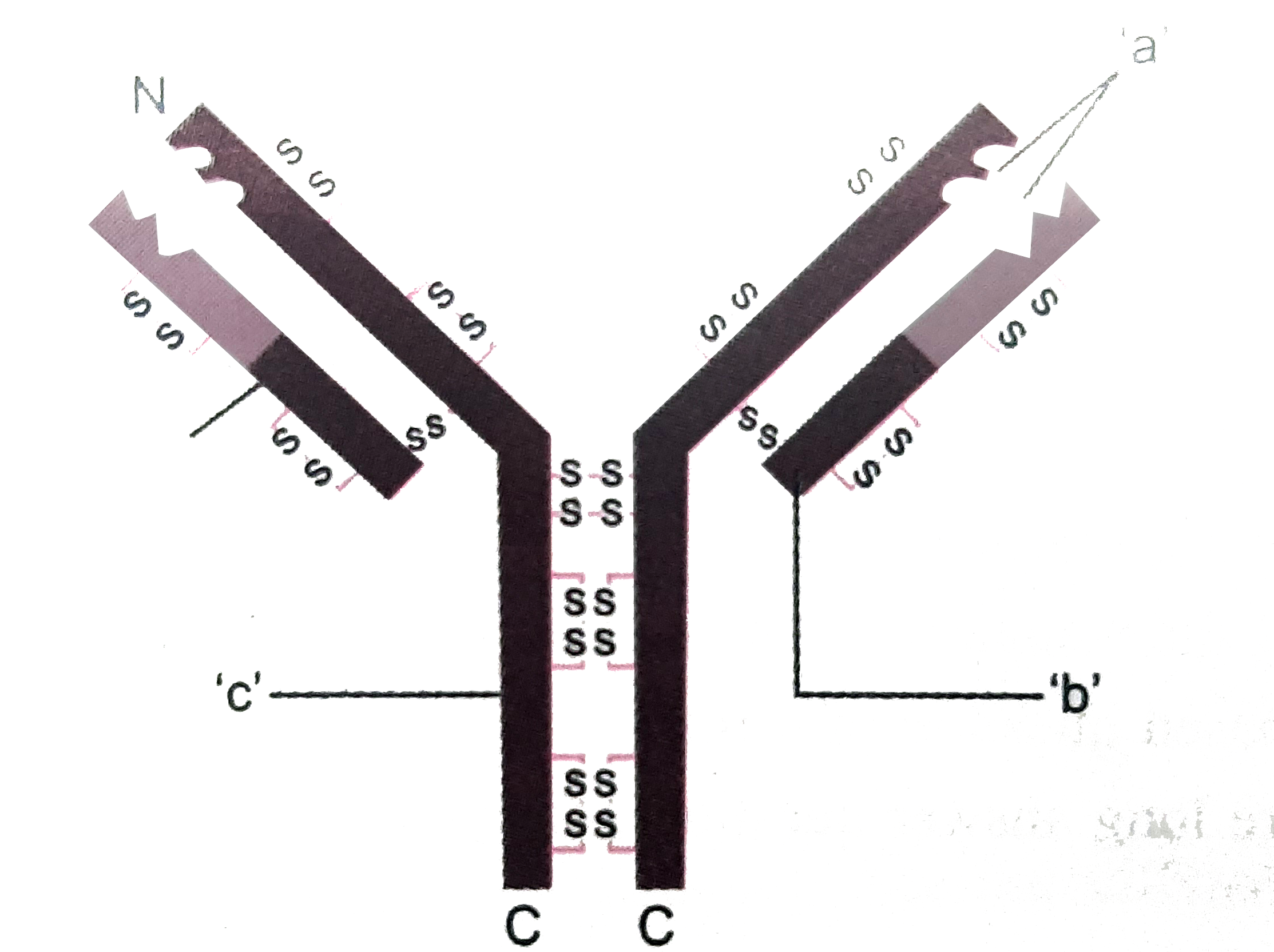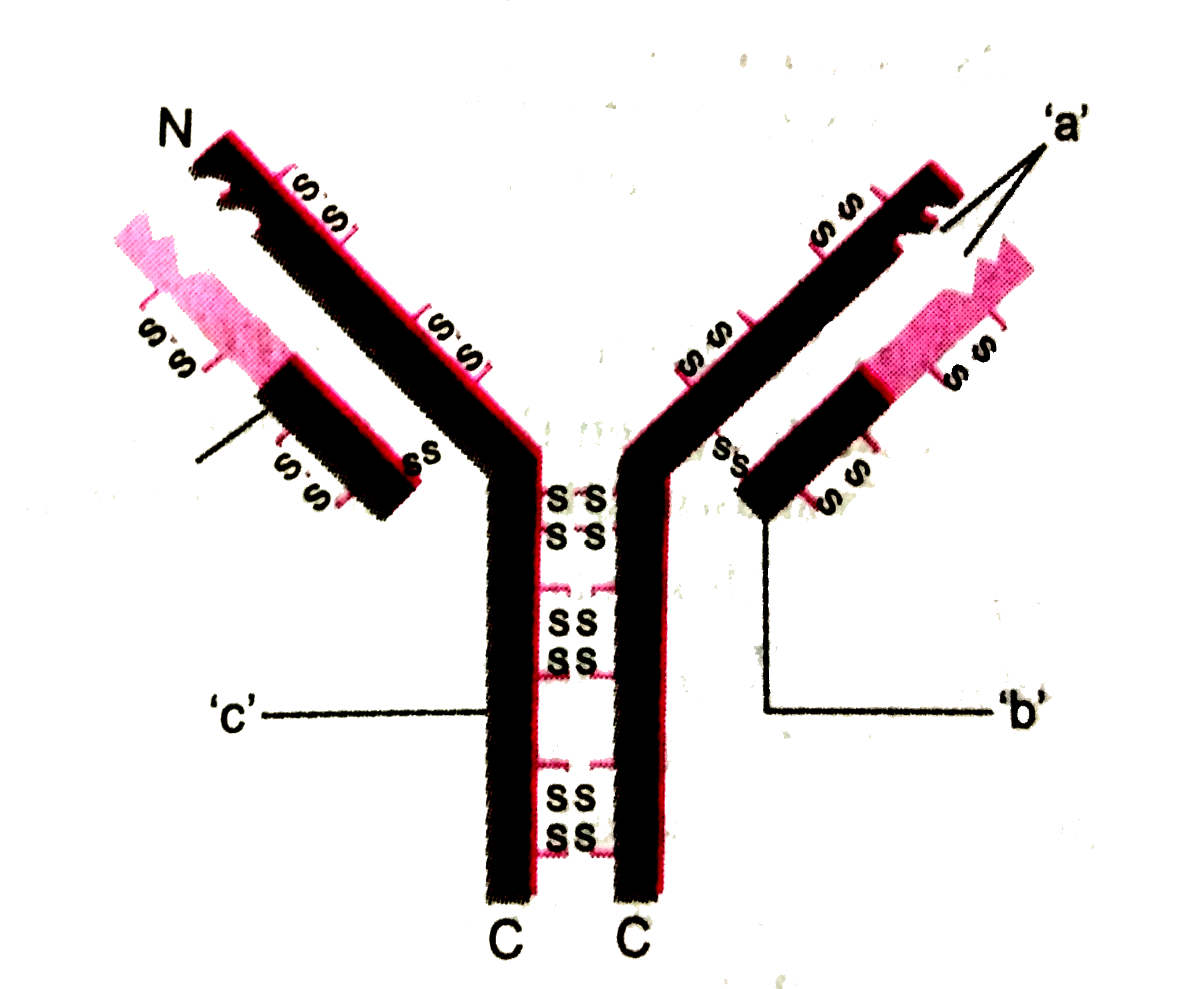(a) Highlight the role of thymus as a lymphoid organ.
(b) Name the cells that are released from the above mentioned gland. Mention how they help in immunity.
(a) Thymus is a primary lymphoid organ located just above the heart. It is the largest sized at puberty but atrophies with age. It secretes thymosine hormone which helps in maturation and differentiation of T-lymphocytes.
(b) T-lymphocytes are antigen-specific immune cells released from thymus gland. T-lymphocytes, when stimulated, form a clone of 3 types of cells : Helper-T cells (which stimulate B-lymphocytes to produce antibodies), Killer T-cells (which kill the pathogenic micro-organisms) and suppressor-T cells (which suppress own immune system not to attack own cells).
Topper's Solved these Questions
- BOOK - MODERN PUBLICATIONCHAPTER - HUMAN HEALTH AND DISEASESEXERCISE - REVISION EXERCISES (IV. SHORT ANSWER TYPE - II QUESTIONS) (A. QUESTIONS FROM STATE BOARD EXAMINATIONS)61videos
HUMAN HEALTH AND DISEASES
- BOOK - MODERN PUBLICATIONCHAPTER - HUMAN HEALTH AND DISEASESEXERCISE - REVISION EXERCISES (IV. SHORT ANSWER TYPE - II QUESTIONS) (B. QUESTIONS FROM CBSE EXAMINATIONS)18videos
HUMAN HEALTH AND DISEASES
- BOOK - MODERN PUBLICATIONCHAPTER - HUMAN HEALTH AND DISEASESEXERCISE - REVISION EXERCISES (III. SHORT ANSWER TYPE - I QUESTIONS) (A. QUESTIONS FROM STATE BOARD EXAMINATIONS)79videos
HUMAN HEALTH AND DISEASES
- BOOK - MODERN PUBLICATIONCHAPTER - EVOLUTIONEXERCISE - CHAPTER PRACTICE TEST (SECTION-D)(CASE-BASED SHORT ANWER )(THREE MARK EACH)2videos
EVOLUTION
- BOOK - MODERN PUBLICATIONCHAPTER - HUMAN REPRODUCTIONEXERCISE - CHAPTER PRACTICE TEST (SECTION - D LONG TYPE QUESTION)2videos
HUMAN REPRODUCTION
Similar Questions
State the role of thymus as a lymphoid organ. Name the cells that are released from it and mention their function.
View SolutionName the hormones produced by adrenal gland. Mention their roles in metabolism.
View SolutionMention the role of the following organ:
Cowper's glandView SolutionName the first organic compound synthesised and mention how it was synthesised.
View SolutionIdentify a, b and c in the schematic diagram of an antibody given here and answer the question :

(i) Write the chemical nature of a antibody.
(ii) Name the cells that produce antibodies in humans.
(iii) Mention the type of immune response provided by an antibody.View SolutionIdentify a, b and c in the schematic diagram of an antibody given here and answer the question :
(i) Write the chemical nature of a antibody.
(ii) Name the cells that produce antibodies in humans.
(iii) Mention the type of immune response provided by an antibody.
 View Solution
View Solution(a) Name the causative agent of typhoid in humans. (b) Name the test administered to confirm the disease. (c) How does the pathogen gain entry into the human body ? Write the diagnostic symptoms and mention the body organ that gets affected in severe cases.
View Solution(a) Name the lymphoid organ in humans where all the blood cells are produced.
(b) Where do the lymphocytes produced by the lymphoid organ mentioned above migrate and how do they affect immunity?View SolutionName the endocrine gland that produces calcitonin and mention the role played by this hormone.
View SolutionHow many cells are present in the pollen grain at the time of their release from anther ? Name the cells.
View Solution
